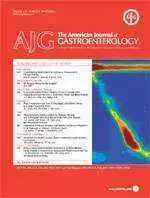Celiac.com 07/16/2014 - Information about the number of cases and and overall rates of celiac disease and dermatitis herpetiformis in the UK have not been well studied over time, either by region or by age. Yet, this type of information is essential for determining potential causes and quantifying the impact of these diseases.
 To provide this information, a team of researchers recently conducted a population-based study to assess incidence and prevalence of celiac disease and dermatitis herpetiformis in the UK over two decades.
To provide this information, a team of researchers recently conducted a population-based study to assess incidence and prevalence of celiac disease and dermatitis herpetiformis in the UK over two decades.
Celiac.com Sponsor (A12):
The researchers included J. West, K.M. Fleming, L.J. Tata, T.R. Card, and C.J. Crooks. They are variously affiliated with the Division of Epidemiology and Public Health, City Hospital Campus, The University of Nottingham, the NIHR Biomedical Research Unit in Gastrointestinal and Liver Disease at Nottingham University Hospitals NHS Trust, and the Division of Epidemiology and Public Health at the City Hospital Campus of The University of Nottingham in Nottingham, UK.
They used the Clinical Practice Research Datalink to identify patients with celiac disease or dermatitis herpetiformis between 1990 and 2011, and calculated incidence rates and prevalence by age, sex, year, and region of residence. They found a total of 9,087 incident cases of celiac disease and 809 incident cases of dermititis herpetiformis.
From 1990 to 2011, the incidence rate of celiac disease rose from 5.2 per 100,000 (95% confidence interval (CI), 3.8-6.8) to 19.1 per 100,000 person-years (95% CI, 17.8-20.5; IRR, 3.6; 95% CI, 2.7-4.8). During that same period, incidence of dermatitis herpetiformis decreased from 1.8 per 100,000 to 0.8 per 100,000 person-years (average annual IRR, 0.96; 95% CI, 0.94-0.97).
The absolute incidence of celiac disease per 100,000 person-years ranged from 22.3 in Northern Ireland to 10 in London. Celiac disease showed large regional variations in prevalence, while dermatitis herpetiformis did not.
The team found a fourfold increase in the incidence of celiac disease in the United Kingdom over 22 years, with large regional variations in prevalence.
This contrasted with a 4% annual decrease in the incidence of dermatitis herpetiformis, with minimal regional variations in prevalence.
These contrasts could reflect differences in diagnosis between celiac disease (serological diagnosis and case finding) and dermatitis herpetiformis (symptomatic presentation) or the possibility that diagnosing and treating celiac disease prevents the development of dermatitis herpetiformis.
Source:
- Open Original Shared Link








Recommended Comments
There are no comments to display.